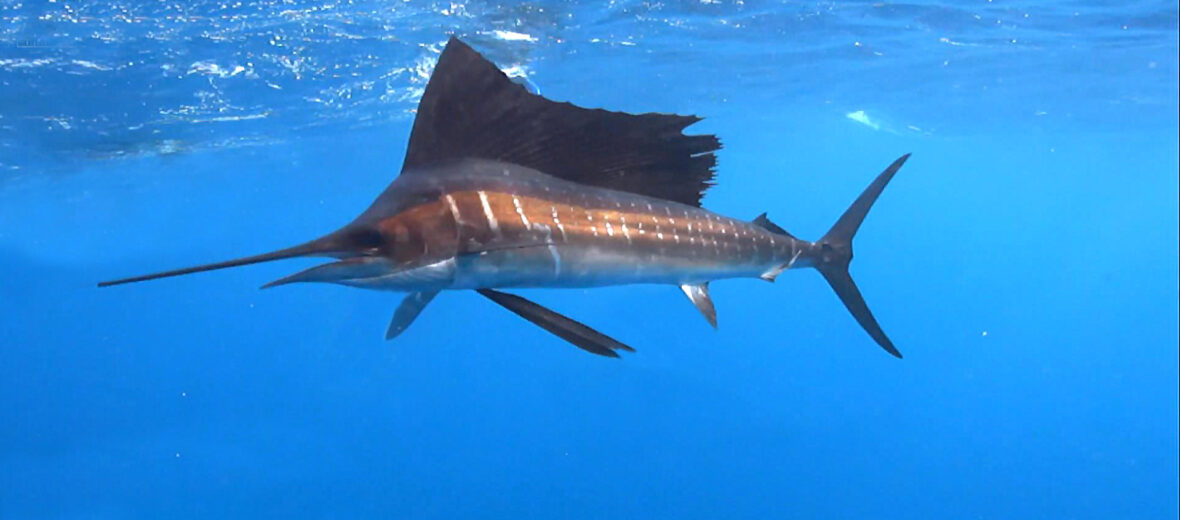
Touted as being the fastest fish in the ocean, the sailfish, aka billfish, uses its speed and its long upper jaw to catch prey and hopefully avoid a sports fisherman. They also use their tall dorsal sail to aid in distracting prey in order to catch a meal. These bony fish can be found in all the oceans around the world, sans the colder Arctic and Antarctic waters. Due to their stable numbers and global populations, sailfish are listed as Least Concern by the IUCN.
First the Stats…
Scientific name: Istiophorus
Weight: Up to 220 lbs.
Length: Up to 10+ feet
Lifespan: Up to 15 years
Now on to the Facts!
1.) Sailfish prey on large bony fishes, crustaceans, and squid. They also work together, using their wonderful sails, to corral sardines and anchovies into tight fish balls in order to feast on more fish.
2.) They are preyed on by sharks, orcas, and mahi-mahi.
3.) There are 2 known species of sailfish: Indo-Pacific and Atlantic. But, since there are no mtDNA differences between the 2, most consider there being only 1 species.
4.) These fish are typically found in the epipelagic zone (the area from the surface to as deep as light penetrates).
5.) When caught by a fisherman, they tend to exhibit amazing breaches from the water.
But wait, there’s more on the sailfish!
6.) These fast growing fish reach sexual maturity in just 3 – 4 years.
7.) In the sailfish world, it’s the female who attracts the male. She does this by extending her dorsal fin, or sail, above the water.
Did you know…?
The sailfish may be able to swim at speeds of up to 68 mph!
8.) In what is called external fertilization, females release millions of eggs and the male then fertilizes said eggs.
9.) Females are larger than males.
10.) These amazing fish also use their long, pointed upper jaw to spear and tear at prey fish.
Now a Short Sailfish Video!
Be sure to share & comment below! Also, check out the Critter Science YouTube channel. Videos added frequently!
Want to suggest a critter for me to write about? Let me know here.



